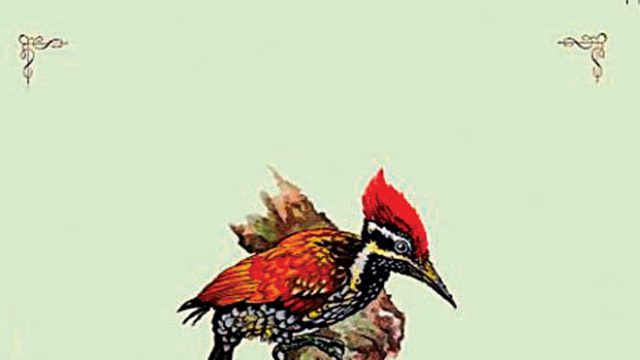This book is a collection of writings by the late naturalist M. Krishnan, culled from his columns in assorted newspapers over several decades. Clearly, efforts are on to rescue Krishnan’s work from the oblivion that overcomes transient periodicals; and deservedly so. He was a naturalist of many parts, an artist as skilled with sketchbook and pen as with a camera, whose careful scientific observation went hand in hand with literary gifts — a rare combination. Ashish and Shanthi Chandola, the wildlife writer/photographer/filmmaker pair, have compiled this collation, following their earlier collection of his writings and photographs entitled Eye in the Jungle. (A still earlier anthology, appropriately entitled Nature’s Spokesman, was edited by Ramachandra Guha.)
The importance of Krishnan’s work does not lie in his attentive documentation of the fauna and avifauna of his country, invaluable as that is, nor in the aesthetics of his black and white photographs. Later generations who can access the animal world at the click of a mouse might find his oeuvre deficient in range and breadth, while the purist might fault him on scientific rigour. But Krishnan cannot be classified, either as a mine of information or an enthusiastic amateur. What makes him singular is the quality of his perception, his powers of observation and expression, the lively intelligence, playful humour, literary allusions and flights of poetry that suffuse his writing. Even the most commonplace fliers like crows and drongos are transformed under his gaze into objects of interest.
Who will not soften to the dull tribe of babblers by his description of their “lax, untidy plumage and frumpy looks, their witless, weak-winged flits from bush to bush one after another, their pale-eyed, sidelong scrutiny of all things”? Or recognise the aptness of his sketch of the purple sunbird’s “scintillating blue and purple livery… He looks a glossy, jet black from a distance, but wait till he comes nearer or a shaft of sunlight catches him, and you will see him in all his sapphire and amethyst glory.”
Appropriately, Krishnan’s avian muse soars to its height in his description of bird flight. Writing of the racing pigeons he used to keep in his youth, he describes them “in the noonday skies, so high up that they were visible only as dark and scintillatingly white stars that winked with each beat of their wings, and circled in a loose constellation. One looked for them, not up into the blinding blue sky, but in a trough of water kept in the open shade — in that glareless, inverted heaven one watched the tireless fliers.”
His description of the peregrine falcon’s stoop from the skies is another perfect little sketch.
In short, it is Krishnan’s seeing eye and writing hand that make him the perfect companion to point out the everyday miracles that we could witness, if we would only pay attention. The next best thing to meeting the rara avis who can disclose to us the epiphanic in the mundane is to have a copy of this book by one’s bedside.




